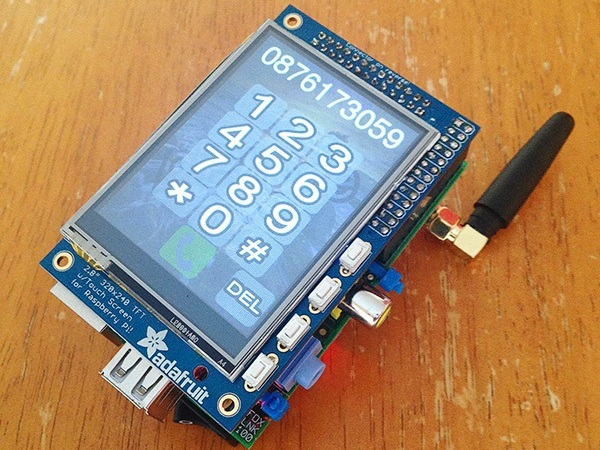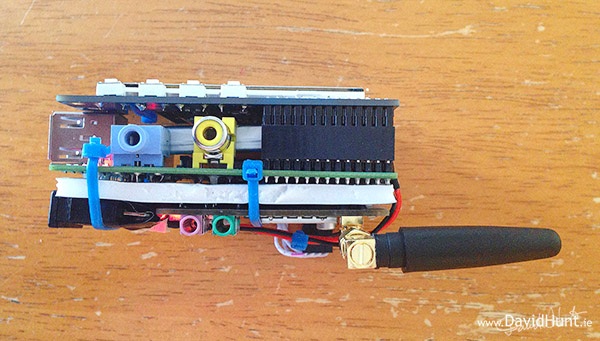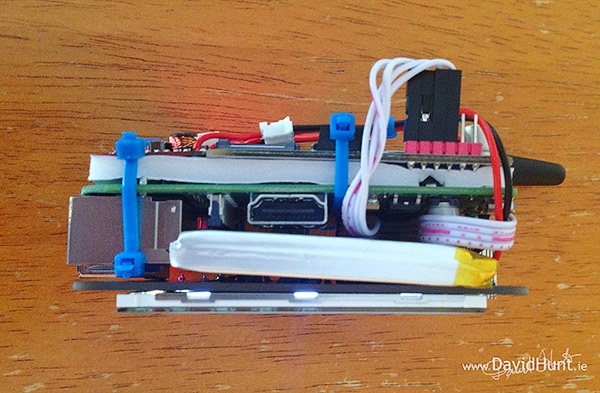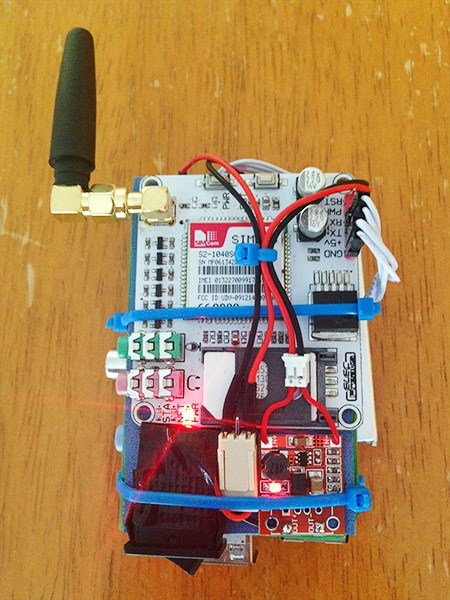PiPhone: DIY Smartphone A With Raspberry Pi Heart
Raspberry Pi enthusiast David Hunt successfully built a smartphone by using our favourite mini-PC. Readers might have recognised Hunt from his previous creations such as #-Link-Snipped-# that opened by recognising a dog’s bark. His latest creation might not be as functional as an off-the-shelf smartphone but it works as a proof of concept where a Raspberry Pi and cheap components come together to make a smartphone. Hunt based the PiPhone on his previous creation Lapse Pi, which was a touchscreen time-lapse controller. He connected a SIM900 GSM/GPRS module via UART and added a 2500mAh Li-Po battery to power up the smartphone.





As you can see from the image above, the PiPhone has its own touchscreen UI that was developed by Hunt himself. The interface helps a user to initiate calls, send text messages and even browse the internet. Hunt admits that the PiPhone gets heated with prolonged usage and advises you to use a small fan around the CPU to cool it. Since we have a lot of Pi enthusiasts in the CE community, here is a list of components that you will need to build your own PiPhone.
If you add the cost of all the components, it comes to 158 US dollars. We would however advise you to wait for sometime before taking the plunge because Hunt hasn’t yet uploaded the source code for the PiPhone. Meanwhile you can have a look at the PiPhone in action in this video below.
News & Image Source: #-Link-Snipped-# via #-Link-Snipped-#





As you can see from the image above, the PiPhone has its own touchscreen UI that was developed by Hunt himself. The interface helps a user to initiate calls, send text messages and even browse the internet. Hunt admits that the PiPhone gets heated with prolonged usage and advises you to use a small fan around the CPU to cool it. Since we have a lot of Pi enthusiasts in the CE community, here is a list of components that you will need to build your own PiPhone.
- Raspberry Pi Model B – $40
- PiTFT Touchscreen 320×240 – $35
- 2500mAh LiPo battery – $15
- SIM900 GSM/GPRS module – $48
- DC-DC boost converter 3.3V – 5V 1A – $10
- Cables, connectors, switch, etc. - $10
If you add the cost of all the components, it comes to 158 US dollars. We would however advise you to wait for sometime before taking the plunge because Hunt hasn’t yet uploaded the source code for the PiPhone. Meanwhile you can have a look at the PiPhone in action in this video below.
News & Image Source: #-Link-Snipped-# via #-Link-Snipped-#
Replies
You are reading an archived discussion.
Related Posts
Skype's premium feature - group video calling, is now free for all the Windows, OSX and XBOX users. Skype offered this feature to all its premium subscribers for $8.99/month on...
Hi Friends, please help me, I am working on self project: Bike replacement Automobile.
I want to design this vehicle in such a way that it could be 1st choice...
I would like to know which parameter is more dangerous, OC'ing or OV'ing ?
I would love to know reason behind the answer.
We can control GPIO pins out of box using Python. But, since I am not that fond of python (tbh I don't know Python), I am looking for C lib...
We run a single box setup with PHP 5.4 and considering whether we should upgrade to PHP 5.5 to utilise the built in Zend Optimiser+. There's no clear comparison available...
